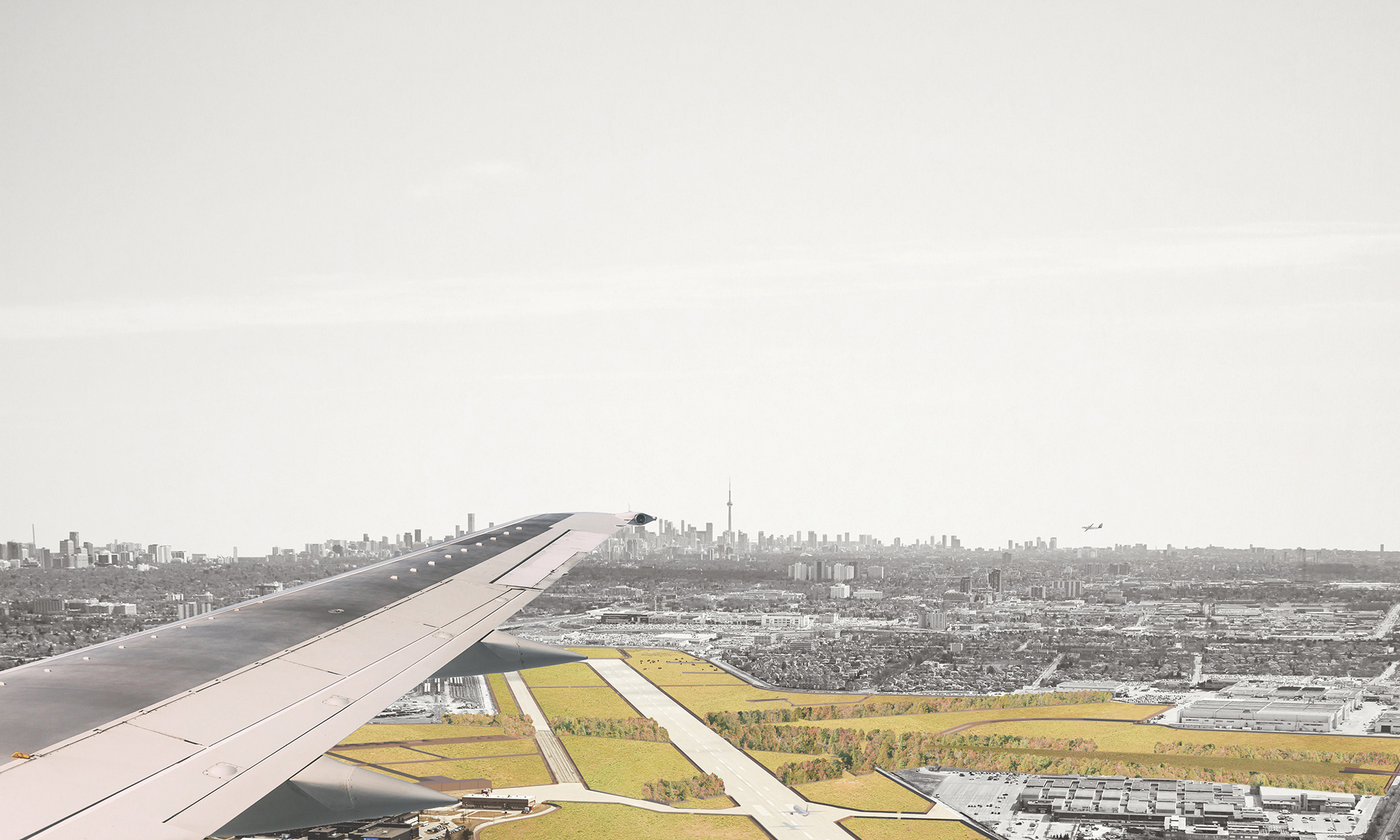
Andrew Taylor, "Downsview Roaming"
In Toronto Ravines — CREATURE (LAN3016), an option studio taught by Alissa North, students were required to develop design proposals according to the guidelines of the LA+ CREATURE competition. The competition brief asks entrants to pick a nonhuman creature as a "client" and then create a place, structure, thing, system, or process that improves the creature's life and promotes human empathy towards it.
Andrew chose to dedicate his project to the plains bison, a once-prevalent North American species that was hunted to near-extinction in the 19th century and now exists mostly on public lands and in captivity. "I was thinking, what if we brought this once-dominant species back into an urbanized area?" Andrew says. "And more than that, what if we brought them into the extreme operation of an airport?"
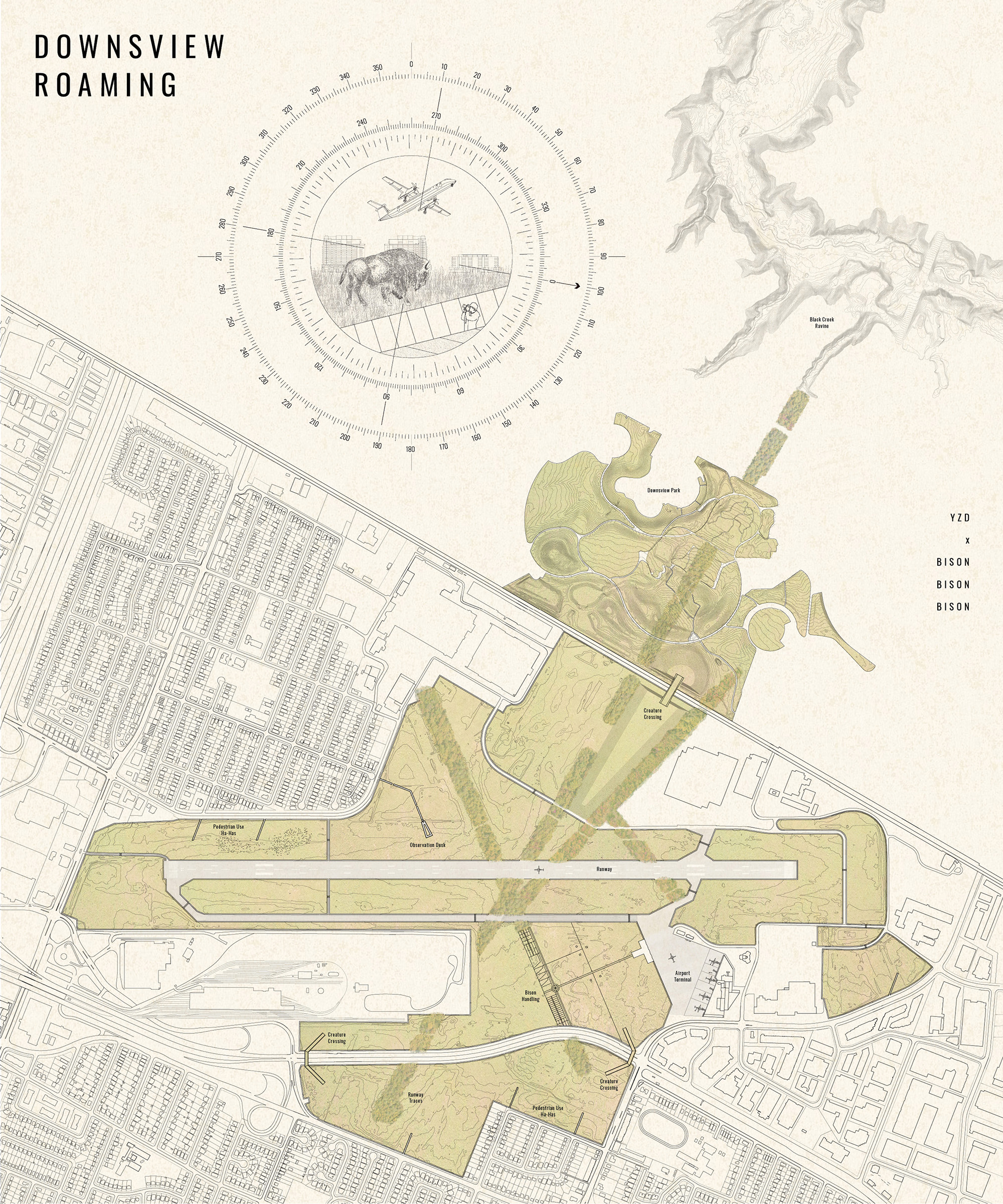
Downsview Airport site plan.
As a location for this experiment, Andrew chose Toronto's Downsview Airport, in the city's northwest corner. The site appealed to him because it contained a lot of flat, grassy space, similar to the plains-type habitat that bison evolved to inhabit. "I was thinking about that interstitial space," he says. "The idea was that it could be transformed into a tall-grass prairie, and that would be a lot more useful in terms of providing biodiversity, and in terms of preventing birds like geese from landing in the airport vicinity. And it would also provide a food source for the bison."
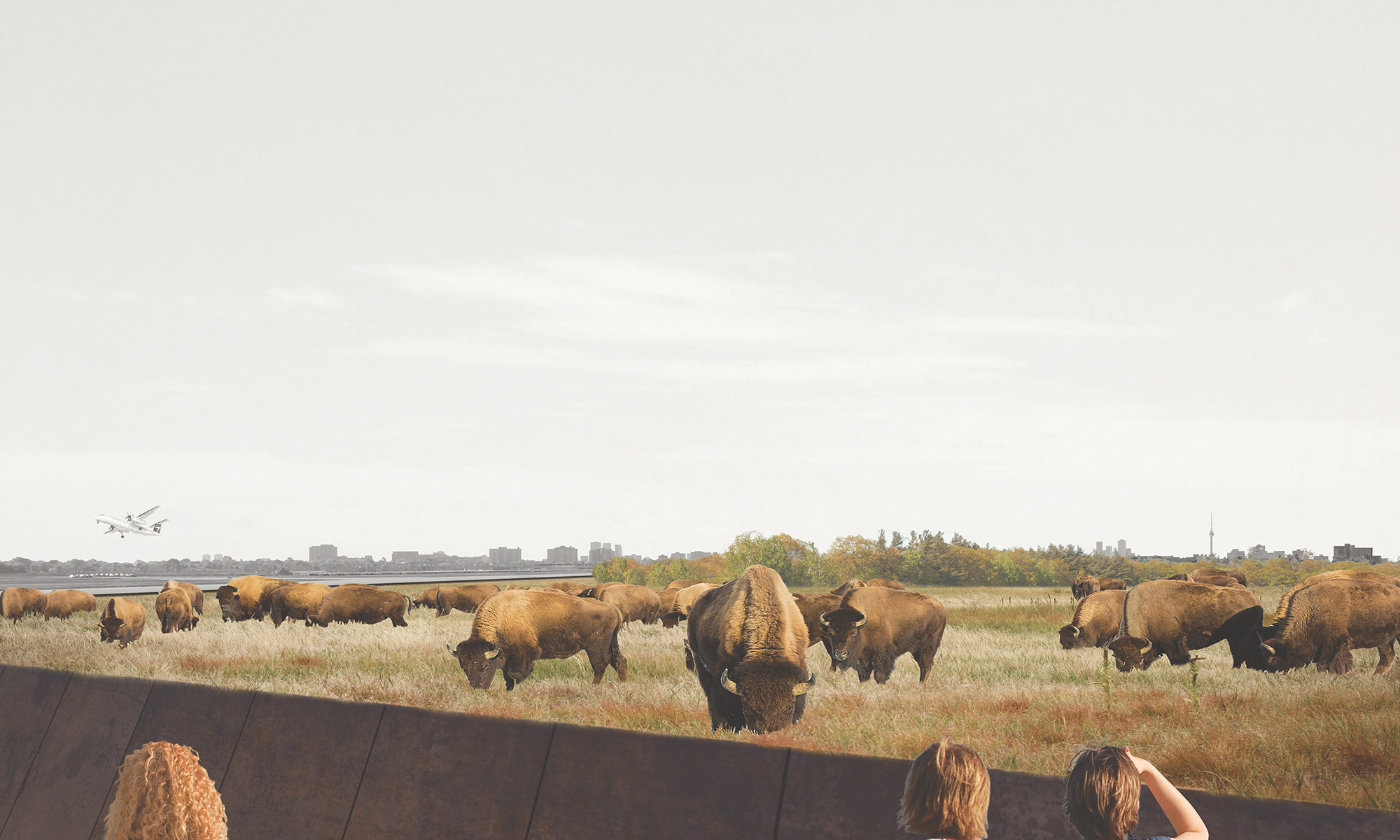
Perspective rendering showing human visitors viewing bison from within ha has.
Of course, Bison and airplanes have very different needs. It was necessary for Andrew to develop a way of keeping the two things separated. After considering a few different options, he landed on the idea of using ha-has — sunken fences that prevent animal movement without adding any visual clutter to the landscape.
In addition to the ha-has, there would be a system of mechanical cattle grids that could be switched on or off to control the movement of the bison herd around the airport grounds. "Their movement would be managed by humans in a rotational grazing regime," Andrew says. "They would slowly be moved across the space over time to eat the grasses and then allow the grasses to regenerate."
Human visitors would be able to visit the airport grounds and view the herds from within the sunken ha-has. The experience would bring them in close proximity to the bison, stimulating empathy.
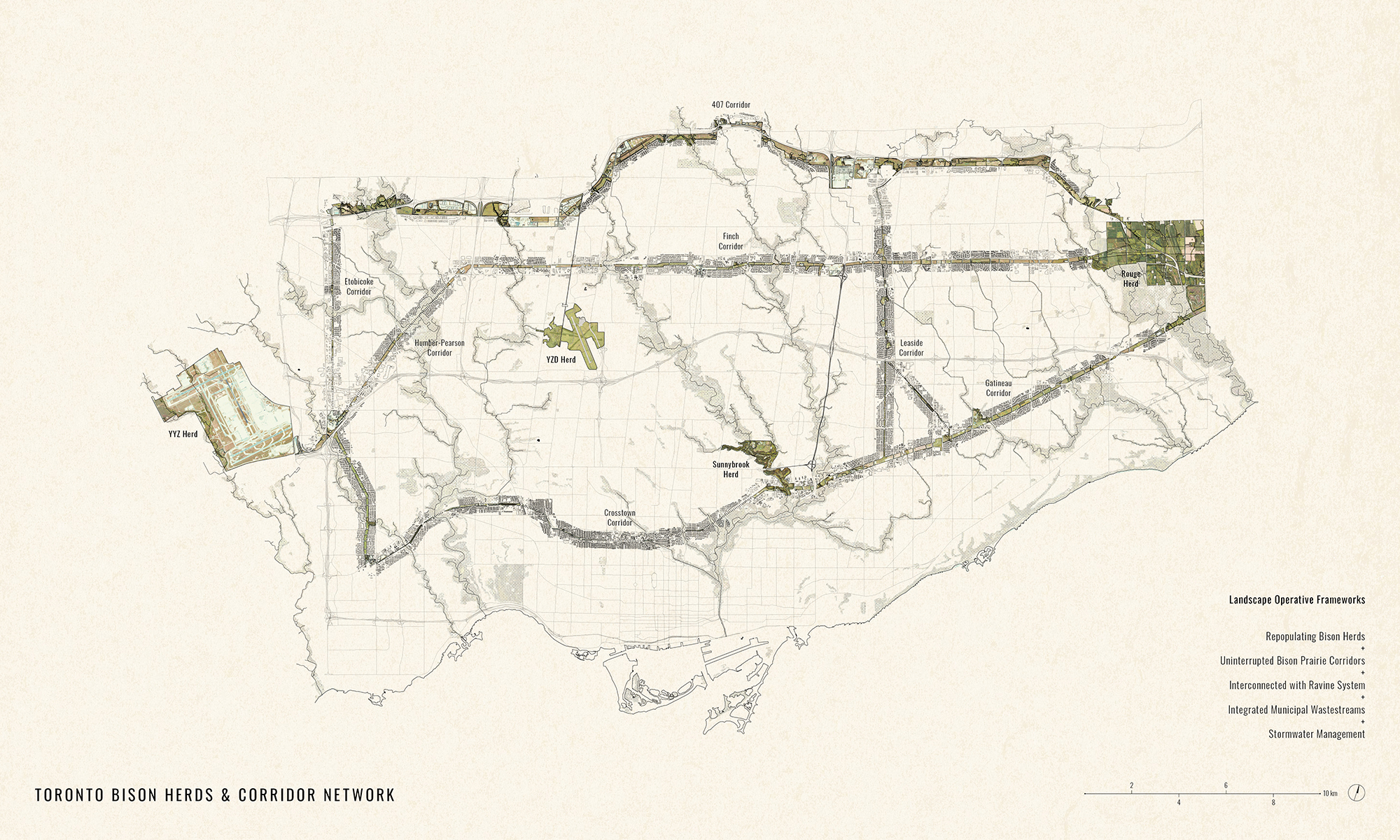
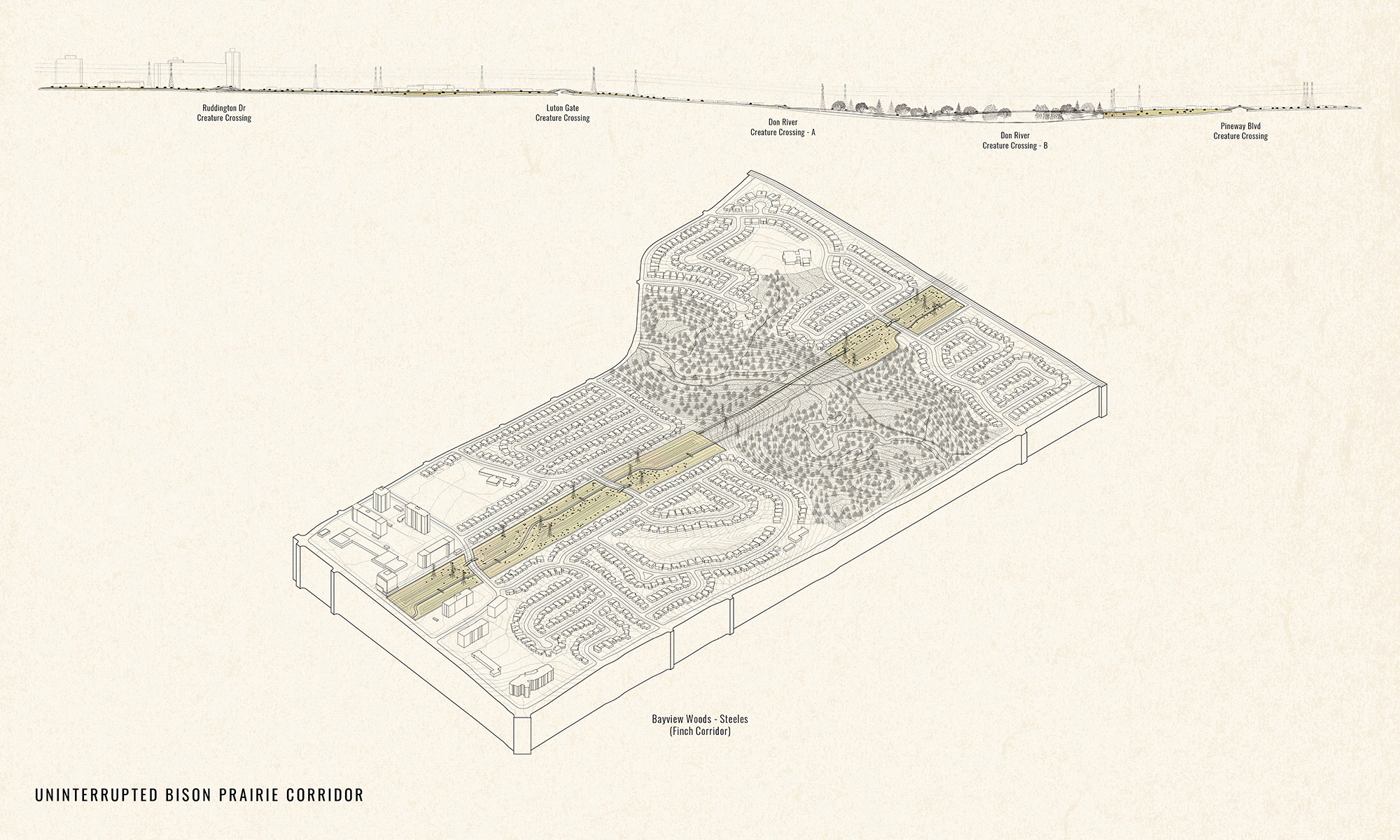
Top: A map showing linked bison habitats across the city's utility corridors. (Click to view a larger version.) Bottom: Detail view of the Finch hydro corridor. (Click to view a larger version.)
Once the Downsview Airport bison herd was fully established, Andrew's plan would move into a second phase. Bison from Downsview would be transplanted to other locations, including Pearson Airport and Rouge Park, where they would become the progenitors of new herds. Eventually, the bison herds would be allowed to roam the city's hydro corridors, transforming all of Toronto into a grand staging ground for bison repopulation.

